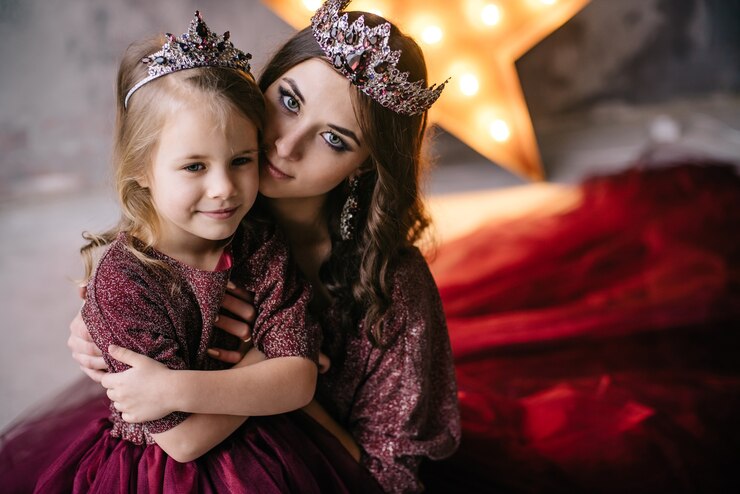A Comprehensive Guide to materialistic princess spoiler

Introduction to Materialistic Princesses
Once upon a time inside the mesmerizing international of princesses, glittering tiaras, and magical castles, there exists a not-so-fascinating fashion that has taken root – materialistic princesses. These contemporary royals are often portrayed as captivated with fashion designer robes, glowing jewels, and lavish existence. But behind the glamour lies a deeper trouble that affects each youngsters and society at massive. Join us on a journey to discover the fascinating but concerning realm of materialistic princess way of life on this complete guide.
The Impact of Materialism on Princess Culture
Materialism has seeped into princess way of life, shaping the way young girls perceive happiness and success. With fairy stories frequently focused round extravagant castles, beautiful robes, and magical add-ons, materialistic values are subtly embedded in these narratives. The portrayal of princesses as individuals whose well worth is tied to their possessions can impact impressionable minds.
Children may additionally start associating success with owning the modern-day toys or style tendencies promoted by their preferred princess characters. This emphasis on external appearances and wealth can overshadow crucial characteristics like kindness, intelligence, and resilience. As a end result, younger audiences may prioritize fabric items over non-public increase or meaningful relationships.
The impact of materialism on princess subculture is going beyond simply leisure; it can form kid’s ideals about self-worth and societal expectancies. By spotting those affects early on, parents can manual their youngsters towards valuing inner characteristics over superficial possessions. It’s critical to foster discussions that highlight the significance of empathy, generosity, and authenticity in defining actual happiness amidst a global passionate about cloth gain.
Examples of Materialistic Princesses in Media
When it comes to materialistic princesses in media, there are numerous iconic characters that come to mind. One such example is Princess Jasmine from Disney’s Aladdin. Known for her high priced palace and choice for a life beyond the partitions of royalty, Jasmine embodies the appeal of fabric possessions.
Another top notch man or woman is Princess Mia Thermopolis from The Princess Diaries series. Initially portrayed as a clumsy teen blind to her royal lineage, Mia undergoes a transformation that includes lavish gowns and luxurious surroundings – highlighting the materialistic components of princess lifestyle.
In more recent instances, we see Queen Elsa from Frozen who is going thru a adventure of self-discovery at the same time as also embracing her regal reputation with lovely ice palaces and elegant attire.
These examples exhibit how materialism is often intertwined with the portrayal of princesses in famous media, shaping young minds’ perceptions along the manner.
The Negative Effects of Materialism on Children
Materialism could have unfavourable outcomes on kid’s improvement. When children are constantly bombarded with messages that equate happiness and achievement with cloth possessions, it may lead to a distorted experience of values. They may also begin to trust that their self confidence is tied to what they very own rather than who they are as individuals.
Moreover, materialistic attitudes can foster a experience of entitlement in youngsters, making them much less appreciative of what they have got and greater focused on getting extra matters. This attitude can avoid their ability to cultivate significant relationships primarily based on real connections in preference to superficial shows of wealth or fame.
Furthermore, immoderate focus on cloth items can contribute to emotions of lack of confidence and inadequacy in youngsters who might not have the contemporary toys or gadgets. It creates a way of life in which assessment and competition force vanity, main to expanded strain and tension amongst younger minds.
As parents and caregivers, it’s far critical to counteract those bad effects via selling values along with gratitude, compassion, and empathy in our children. By encouraging them to prioritize experiences, kindness towards others, and private boom over the buildup of possessions, we equip them with the tools needed to navigate a materialistic global with resilience and authenticity.
How Parents Can Encourage Healthy Values in Their Children

As dad and mom, it is vital to cultivate healthy values in our youngsters. One way to do this is via setting a nice example via our own moves and phrases. Children often mimic what they see, so showing kindness, empathy, and gratitude can pass a long manner.
Encouraging open verbal exchange with your infant is vital. By listening attentively and validating their emotions, you create a safe space for them to specific themselves honestly. This fosters agree with and strengthens your bond.
Teaching kids the significance of giving returned to others instills empathy and compassion. Volunteering together as a family or donating toys to those in need helps youngsters understand the value of assisting the ones much less fortunate.
Emphasizing reports over cloth possessions also can form their perspective on what truly brings happiness in existence. Encourage out of doors sports, creative projects, or excellent time spent together that target constructing memories as opposed to obtaining things.
By continually reinforcing these values in regular interactions along with your baby, you lay the foundation for them to develop into compassionate folks that recognize non-materialistic factors of lifestyles.
Teaching Kids to Appreciate Non-Material Things
In a global full of materialistic affects, teaching youngsters to realize non-fabric matters is greater vital than ever. One way to instill those values in kids is via encouraging acts of kindness and generosity closer to others. Even small gestures like sharing toys or helping a pal can educate youngsters the price of compassion.
Another powerful approach is by way of spending nice time collectively as a circle of relatives without that specialize in cloth possessions. Engaging in activities like trekking, gambling board games, or volunteering at a local charity can help youngsters apprehend that happiness doesn’t always come from proudly owning matters.
Encouraging creativity and creativeness is likewise key in fostering an appreciation for non-fabric things. Encourage your baby to discover their hobbies thru artwork, music, or storytelling, letting them see the splendor in self-expression rather than material items.
By guiding youngsters in the direction of valuing studies, relationships, and private boom over cloth possessions, parents can assist form destiny generations with strong values and empathy towards others.
Conclusion: Finding Balance in a Materialistic World
In a world in which materialism and consumerism frequently dominate, it’s far crucial for mother and father to guide their children in the direction of a balanced attitude. By teaching youngsters the cost of non-material things which includes love, kindness, and reports, dad and mom can assist counteract the bad effects of materialistic princess lifestyle portrayed in media.
Encouraging children to comprehend moments over possessions, relationships over matters, and individual over appearance will instill in them lasting values that cross beyond material wealth. It’s about locating a stability among taking part in the pleasures of existence even as also cherishing the intangible elements that bring authentic happiness and fulfillment.
By being mindful of the messages conveyed with the aid of materialistic princesses in media and actively promoting wonderful values at domestic, parents can empower their kids to navigate a materialistic world with expertise and integrity. Let’s attempt to raise our toddlers as resilient people who recognize that true really worth lies no longer in what they’ve however in who they may be.



